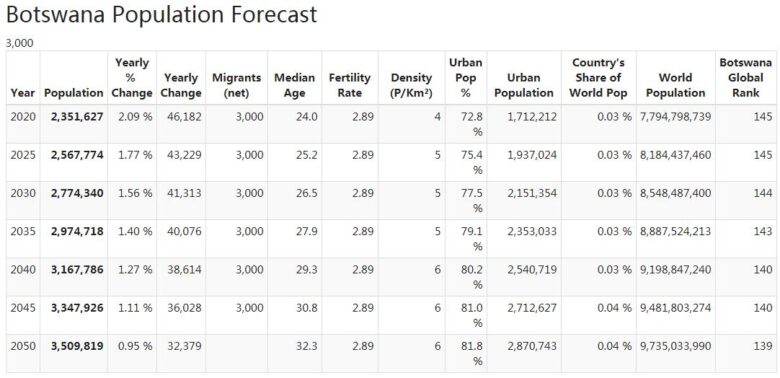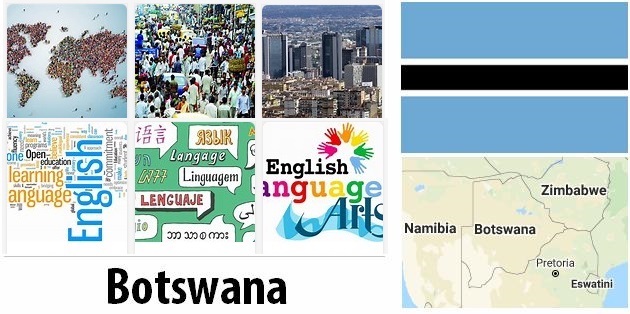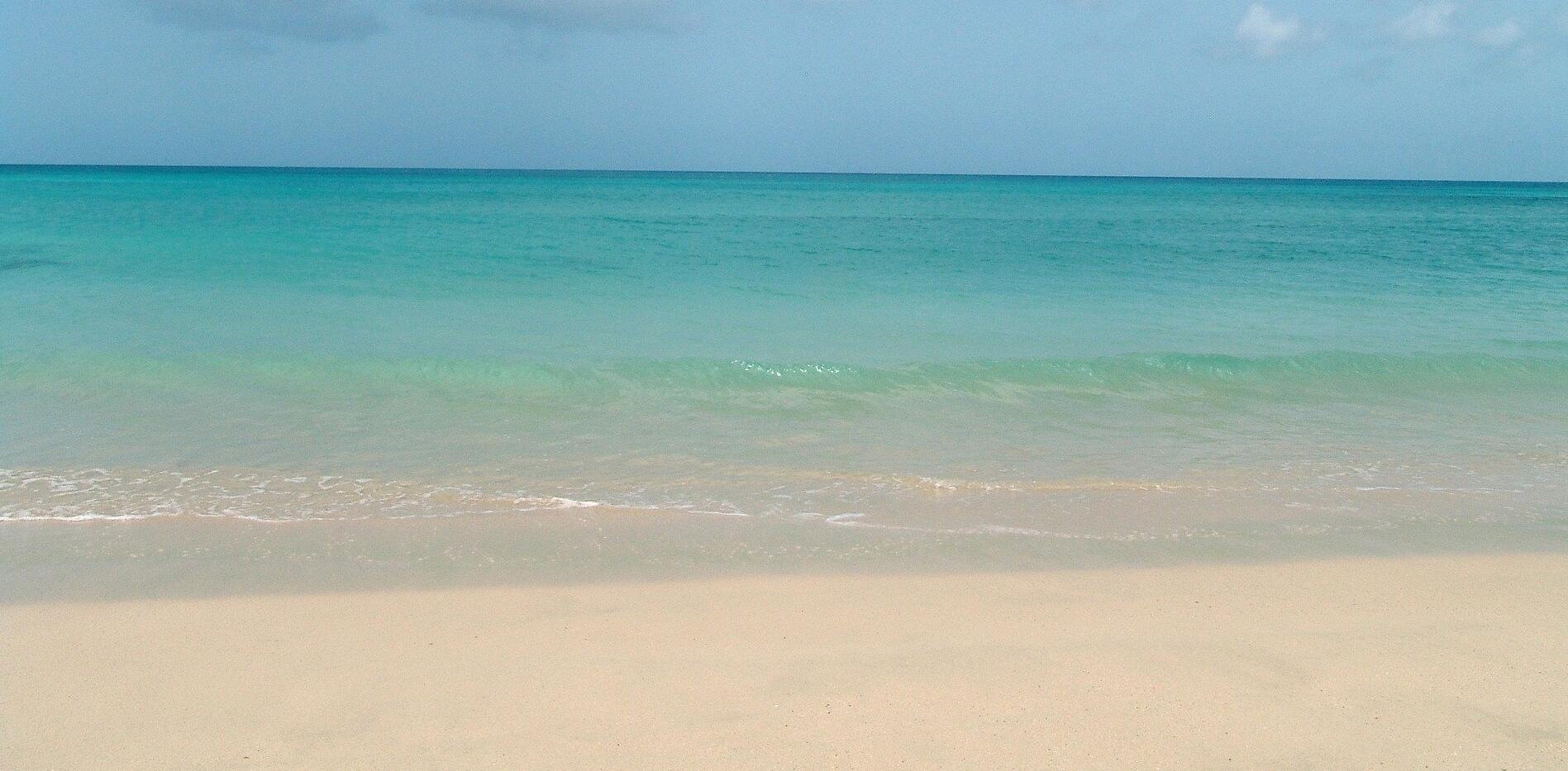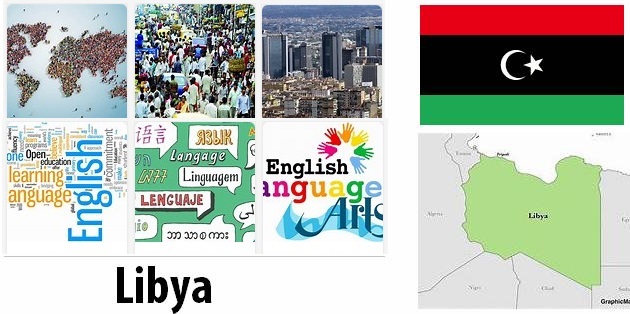Botswana Population and Language
Botswana is very sparsely populated. The largest population group is tswana, with eight subgroups based on the traditional tswana kingdom. Among a number of minority groups are the indigenous people Bushmen (also called basarwa or san).
In the censuses, ethnicity is not recorded, but the Tswana people are estimated to make up around 80 percent of the population. However, some other ethnic groups have been included in tswana. This applies not least to khalagari (kgalagadi) in the south-east.
- COUNTRYAAH.COM: Key populations estimated size and data of Botswana, including population density of how many people per square mile. Also included are facts for population and language.
The largest minority group is kalanga (kalaka), which mainly lives in the northeast. Other groups are herero in the west and yeyi and mbukushu in the north. All these people are bantu people. Since the 1990s, several minority people have demanded that they be recognized as special ethnic minorities.
The indigenous people belong to the ethnic and linguistic group khoisan, which is considered to be the oldest population in sub-Saharan Africa. They are estimated to amount to around 60,000 people in Botswana, of which perhaps 3,000 are still living as hunters and collectors. They are said to prefer the term bushmen themselves; all terms can be regarded as patronizing. The Bushmen have received international attention for their struggle to stay on their traditional lands in the huge game reserve Central Kalahari Game Reserve in the Kalahari Desert (see Current Policy).
There are also smaller groups of residents of European or Asian origin.
In Botswana, tens of thousands of refugees and illegal immigrants from Zimbabwe have been living since the early 2000s. They are often subjected to discrimination and xenophobia. After the Zimbabwe elections in 2013, Zimbabwe will no longer be granted political asylum in Botswana (see also Foreign Policy and Defense).
Eighty percent of residents live in the eastern parts of the country. Migration to the urban areas has been great in recent decades. In the early 1970s, nine out of ten Botswans lived in the countryside, now more than half live in cities.
The high Population growth has been suppressed since the 1990s, partly because the number of births has dropped and as a result of the AIDS epidemic (see Social conditions). Still, one third of the population is under 15 years of age.
The majority of the residents have Setswana (or Tswana) as their mother tongue, and many master it as a second language. Setswana is the national language while English is the official language and is used in administration and education. The minority people speak their own languages, of which all but the Khoisan are bantu languages which form a subgroup of the large group of Niger-Congo languages.
FACTS – POPULATION AND LANGUAGE
Population
majority of Tswana people, minorities of Kalanga, Bushmen, Khalagari, Europeans and others
Number of residents
2 291 661 (2017)
Number of residents per square kilometer
4 (2017)
Percentage of residents in the cities
68.7 percent (2017)
Nativity/birth
23.7 per 1000 residents (2016)
Mortality/mortality
6.7 per 1000 residents (2016)
Population growth
1.8 percent (2017)
Fertility rate
2.7 number of births per woman (2016)
Percentage of women
50.6 percent (2017)
Life expectancy
67 years (2016)
Life expectancy for women
70 years (2016)
Life expectancy for men
64 years (2016)
Language
setswana is a national language, English is an official language, a number of minority languages are also spoken
2011
September
The Bushmen’s well is reopened
One of the bushmen’s most important wells in the Kalahari desert is reopened.
May
Motswaledi becomes party leader for BMD
BMD holds its first party congress. Gomolemo Motswaledi, former secretary general of the BDP, is appointed party leader (see September 2009).
April
National strike on wages
Public employees initiate a strike with demands for 16 percent salary increases. It is Botswana’s first nationwide strike. The strike is aborted after three months when the parties agreed to a 3 percent pay rise.
February
Contact with Libya is broken
Botswana breaks diplomatic relations with Libya. Foreign Minister Phandu Skelemani questions the African Union’s (AU) silence in connection with the riots in North Africa.
The EU bans Botswana meat
The EU prohibits the import of beef from Botswana due to deficiencies in origin certification and slaughter processes. Meat exports fall immediately by 89 percent.
January
New opportunities for the bushmen
The country’s highest court gives the bushmen the right to open water sources and wells on their traditional lands in the large game reserve Central Kalahari Game Reserve. The sources had been sealed by the government as part of a campaign to get the people to move to more modern housing outside the reserve (see Current Policy).




